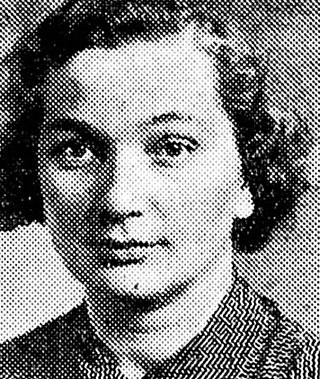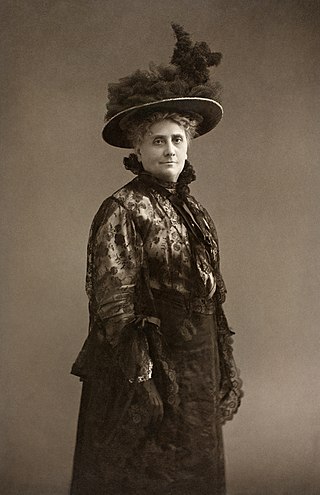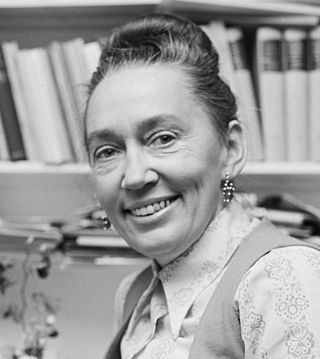Liberal feminism, also called mainstream feminism, is a main branch of feminism defined by its focus on achieving gender equality through political and legal reform within the framework of liberal democracy and informed by a human rights perspective. It is often considered culturally progressive and economically center-right to center-left. As the oldest of the "Big Three" schools of feminist thought, liberal feminism has its roots in 19th century first-wave feminism seeking recognition of women as equal citizens, focusing particularly on women's suffrage and access to education, the effort associated with 19th century liberalism and progressivism. Liberal feminism "works within the structure of mainstream society to integrate women into that structure." Liberal feminism places great emphasis on the public world, especially laws, political institutions, education and working life, and considers the denial of equal legal and political rights as the main obstacle to equality. As such liberal feminists have worked to bring women into the political mainstream. Liberal feminism is inclusive and socially progressive, while broadly supporting existing institutions of power in liberal democratic societies, and is associated with centrism and reformism. Liberal feminism tends to be adopted by white middle-class women who do not disagree with the current social structure; Zhang and Rios found that liberal feminism with its focus on equality is viewed as the dominant and "default" form of feminism. Liberal feminism actively supports men's involvement in feminism and both women and men have always been active participants in the movement; progressive men had an important role alongside women in the struggle for equal political rights since the movement was launched in the 19th century.

Eva Severine Lundegaard Kolstad was a Norwegian politician and government minister for the Liberal Party. A major figure in the history of liberal feminism and the development of state feminism in the Nordic countries, she pioneered gender equality policies in Norway and at the United Nations. She served as president of the Norwegian Association for Women's Rights (1956–1968), member and vice chairman of the United Nations Commission on the Status of Women (1969–1975), Minister of Government Administration and Consumer Affairs of Norway in Korvald's Cabinet (1972–1973), leader of the Liberal Party (1974–1976) and as Norwegian Gender Equality Ombudsman (1978–1988), the first gender equality ombudsman worldwide.

Henriette Bie Lorentzen, born Anna Henriette Wegner Haagaas, was a Norwegian journalist, humanist, peace activist, feminist, co-founder of the Nansen Academy, resistance member and concentration camp survivor during World War II, and publisher and editor-in-chief of the women's magazine Kvinnen og Tiden (1945–1955).

The Norwegian Association for Women's Rights is Norway's oldest and preeminent women's and girls' rights organization and works "to promote gender equality and all women's and girls' human rights through political and legal reform within the framework of liberal democracy." Founded in 1884, NKF is Norway's oldest political organization after the Liberal Party. NKF stands for an inclusive, intersectional and progressive mainstream liberal feminism and has always been open to everyone regardless of gender. Headquartered at Majorstuen, Oslo, NKF consists of a national-level association as well as regional chapters based in the larger cities, and is led by a national executive board. NKF has had a central role in the adoption of all major gender equality legislation and reforms since 1884.

Jørgine Anna Sverdrup"Gina" Krog was a Norwegian suffragist, teacher, liberal politician, writer and editor, and a major figure in liberal feminism in Scandinavia.

Nylænde was a Norwegian political and cultural magazine that focused on women's rights. It was regarded as one of the most influential political magazines in Norway in its time and played an important role in the early Norwegian women's rights movement, and the struggle for women's suffrage. It was succeeded by the journal Kvinnesaksnytt in 1950.
State feminism is feminism created or approved by the government of a state or nation. It usually specifies a particular program. The term was coined by Helga Hernes with particular reference to the situation in Norway, which had a tradition of government-supported liberal feminism dating back to the 1880s, and is often used when discussing the government-supported gender equality policies of the Nordic countries, that are linked to the Nordic model. The term has also been used in the context of developing countries where the government may prescribe its form of feminism and at the same time prohibit non-governmental organizations from advocating for any other feminist program. In this sense it is possible to distinguish between a liberal state feminism found in Western democracies such as the Nordic countries, and a somewhat more authoritarian state feminism that is often also linked to secularism, found e.g. in certain Middle Eastern countries.

The feminist movement in Norway has made significant progress in reforming laws and social customs in the nation, advancing the rights of the women of Norway.

Hege Skjeie was a Norwegian political scientist and feminist.

Margarete Ottilie Bonnevie was a Norwegian author, women's rights advocate and politician for the Liberal Party of Norway. A liberal feminist, she served as the 13th President of the Norwegian Association for Women's Rights (NKF) from 1936 to 1946 and is credited with reviving the liberal women's rights movement in the 1930s. Bonnevie said that NKF should work for solutions that are in the best interest of all women and society, "be the captain who keeps a steady course" in the struggle for equality and "set out the main policy objectives and seek to get the government, parliament and local government bodies to implement the reforms that are required."
Clara Ottesen was a Norwegian government official, economist, aid worker and politician.

Kari Skjønsberg was a Norwegian academic, writer and feminist.
Kvinnen og Tiden was a Norwegian magazine for women published between 1945 and 1955.

The Gender Equality and Anti-Discrimination Ombud is a Norwegian ombudsman for gender equality and anti-discrimination, and is appointed for a term of six years by the King-in-Council, in effect by the Government of Norway. The ombudsman heads the similarly named government agency.

Fredrikke Andrea Møllerup Mørck was a Norwegian liberal feminist, editor, and teacher. She served as the editor-in-chief of the women's rights magazine Nylænde from 1916 to 1927 and as the 10th president of the Norwegian Association for Women's Rights from 1926 to 1930.
The Norwegian Women's Lobby is a feminist policy and advocacy organization in Norway and works for "the human rights of girls and women in all their diversity, to eliminate all forms of discrimination against all girls and women and to promote a gender equal society." It is described as the country's "main, national, umbrella organization" for women's rights. NWL understands women's human rights and discrimination in an intersectional perspective and works to represent the interests of all those who identify as women and girls. NWL is funded by the government over the national budget. The mission of the organization is to eliminate all forms of discrimination against women and girls on the basis of the Convention on the Elimination of All Forms of Discrimination Against Women, the Beijing Platform for Action and other fundamental international agreements relating to women's human rights. It works to integrate women's perspectives into all political, economical and social processes.

Dagny Caroline "Dakky" Kiær was a Norwegian politician for the Liberal Party, feminist and civic leader.
Sigrun Hoel is a Norwegian lawyer, academic, government official and feminist. She served as the 22nd President of the Norwegian Association for Women's Rights (NKF) from 1984 to 1988, succeeding supreme court justice Karin M. Bruzelius. Before she became the national President she was chair of the Oslo chapter from 1980 to 1984 and Vice President of NKF from 1982 to 1984. She was acting Gender Equality Ombud in 1984, 1988 and 1991.
Siri Hangeland is a Norwegian feminist, civic leader and politician.
Bjørg Krane Bostad is a Norwegian feminist, civic leader, civil servant, businesswoman and humanitarian.













